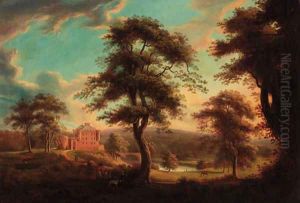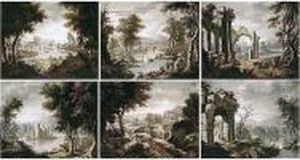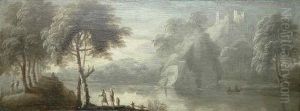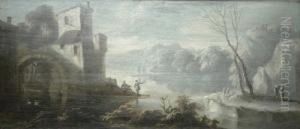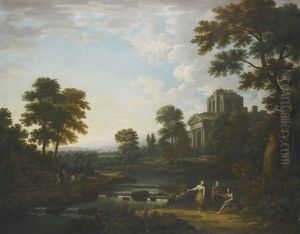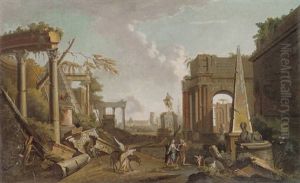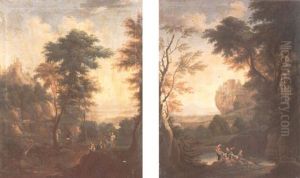James Norie Paintings
James Norie was a Scottish painter known for founding the Norie family of painters who were prominent in the 18th century. He was born in 1684 in Edinburgh, Scotland. James Norie, also known as James Norie Senior, was primarily recognized for his work as a decorative painter and his contribution to the art of landscape painting in Scotland during his time.
Norie's early life and training are not well-documented, but it is believed that he may have been self-taught or learned painting through an apprenticeship. He started his career by painting decorative interiors for homes of the wealthy and the nobility. His work included landscapes, which he often painted directly onto the walls of grand Scottish houses as a part of their interior decoration. This type of work was quite popular in the early 18th century, and Norie found a considerable amount of success in this niche.
In addition to his decorative work, James Norie also painted traditional canvases. His style was influenced by the Dutch landscape tradition, which was characterized by a high level of detail, a calm atmosphere, and often included scenes of everyday life. Norie's work, however, adapted this style to Scottish landscapes, which was somewhat unusual at the time and contributed to the development of a distinct Scottish tradition in landscape painting.
James Norie was not only a painter but also a teacher, and his legacy extends through the Norie family of painters, which included his son, Robert Norie, and his grandsons, who continued the family tradition of painting. The Norie family's work went on to influence Scottish art, particularly in the realm of landscape painting, for decades. Their collective body of work provides insight into the aesthetic preferences and social history of Scotland in the 18th century.
James Norie Senior passed away in 1757. While he may not be as widely known today as some of his contemporaries, his contribution to Scottish art, particularly in the field of landscape painting and decorative arts, is recognized by art historians and contributes to our understanding of the cultural landscape of Scotland during his lifetime.
